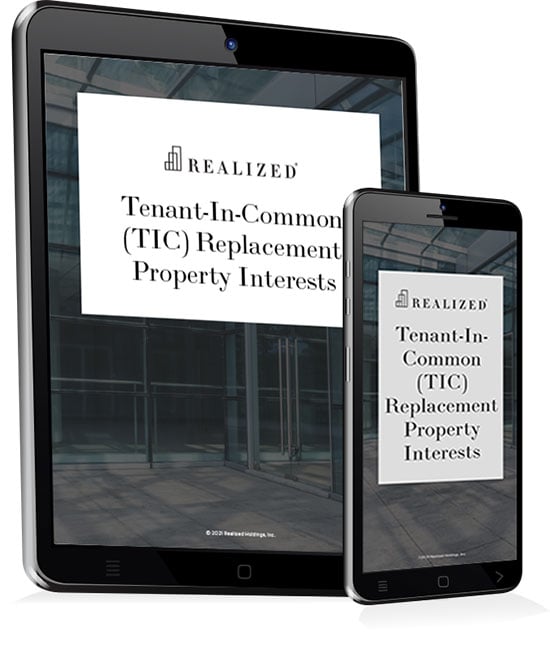
Let’s say that there is a well-performing retail property in your neighborhood that is for sale. You’re interested in buying it, but you might not have all the funds available to do so. You decide to involve your two best friends in the deal, and the three of you enthusiastically head off to meet your lawyer. The lawyer, in turn, asks the question: “So, how do you want this ownership to be set up?”
Rather than looking at your friends and shrugging helplessly, it’s a good idea to understand two fairly popular legal arrangements available for the purpose of asset ownership. These are joint tenancy and tenants-in-common. The following discussion will introduce you to the concepts, and to help determine which might be the right set-up for your particular scenario.
Defining the Ownership
Joint tenancy (JT) and tenants-in-common (TIC) are similar in that they allow more than one person, or more than one entity, to own an asset. That’s the only similarity between these two legal structures.
A JT is structured as an equal partnership, with equal ownership rights. When you and your friends enter a joint-tenant arrangement to acquire and own the retail property, you each own 33.33333% of that property.
Through a TIC structure, however, you own an “undivided interest” or “fractional share” in the property. That fractional share, however, might not be the same percentage as those of your friends. You could, for example, have 48% of the interest in the property, with your friends each having 26% of the remaining interest.
To reiterate, from a basic ownership structure, entering into a joint tenancy agreement means you have an equal share in the property with your partners. And, as a member of a TIC, you’ll own a fractional share of that asset, which could be more or less than your partners.
Joint Tenancy — A Partnership
Four conditions are necessary when it comes to creating a joint tenancy. These are:
- Unity of Possession, in that each of you holds an undivided right to possession
- Unity of Interest, in that each of you holds an equal interest in the property
- Unity of Time, in that all of you must acquire ownership at the same time
- Unity of Title, in that your names are on the same deed
And, as joint tenants, your one main advantage is what is known as “rights of survivorship.”
This concept, sometimes abbreviated as JT WROS, means if one of your partners dies, her share automatically passes to you and your other partner. “Rights of survivorship” allows you to avoid a potentially costly and time-consuming probate process. On the other hand, it also means you can’t pass on your percentage of ownership to the heirs of your choosing.
Another downside of a JT is that the ownership arrangement you have remains until all three of you agree it’s time to sell. If you want out of the partnership before your friends, it isn’t going to happen, which is why having things in writing before the three of you sign that letter of agreement is very important.
To reiterate, joint tenant property ownership arrangements are ideal if you want to sidestep costly probate following the death of one of the partners. However, a JT is a partnership. As with any partnership, it’s important that everything pertaining to the ownership, maintenance, and sale of the asset be very clear upfront, to avoid conflict and confusion later on.
Tenants-in-Common — Fractured Ownership
Unlike the scenario with a JT, a TIC allows you to sell your shares to someone else whenever you want. You don’t need your partners’ stamp of approval if you want an out. By the same token, you can buy shares in a TIC structure whenever you want. You can even exchange TIC shares for other TIC shares, with help from the IRS 1031 rule, and defer payment on capital gains. This means an easier exit from your investment.
Another benefit is that you can bequeath those shares to whomever you want when you die. Unlike your ownership share reverting to your partners in the event of a demise, you can pass those shares down to a beneficiary or heir.
One thing to keep in mind, however, is that as a TIC member, you can’t sell the actual property — as opposed to the shares — without 100% agreement from the other investors, nor can a management decision be made without a unanimous vote from the entire group. And, that group can be large — a TIC can have up to 35 investors. One rogue member could stonewall a potential sale or decision.
Additionally, while you can sell your shares to just about anyone (an advantage), there isn’t a ready-made resale market for these shares (a disadvantage). Meanwhile, if a TIC partner passes away, that individual’s vote is transferred to his/her heir, who might not be readily available, and would need to be tracked down.
Which is the Right One?
As with any kind of ownership structure, there is no “right” or “wrong.” Much depends on what you want from an investment, and what type of ownership relationship will be the most effective for your portfolio. This requires a discussion with your financial advisor or legal counsel.
This material is for general information and educational purposes only. Information is based on data gathered from what we believe are reliable sources. It is not guaranteed as to accuracy, does not purport to be complete and is not intended to be used as a primary basis for investment decisions.
Realized does not offer legal or tax advice. As such, this information should not be used as a substitute for consultation with professional accounting, tax, legal or other competent advisers. Before making any decision or taking any action, you should consult with a qualified professional.



